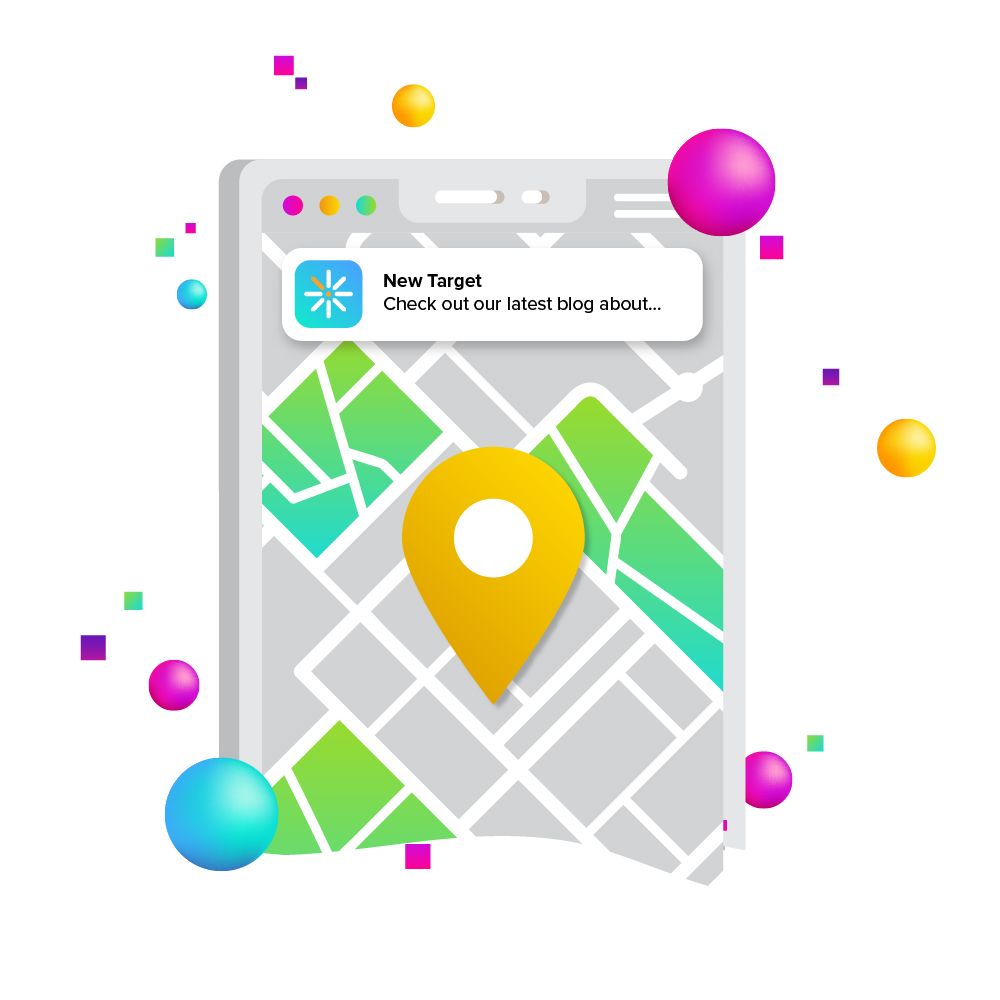
The need to connect with local customers remains crucial for many businesses. Whether you’re a coffee shop looking to increase foot traffic, a retail store aiming to boost in-store purchases, or a service-based business wanting to build a strong community presence, local marketing strategies are essential. One particularly effective tactic is using location-based advertising, which allows businesses to target potential customers in specific geographic areas with tailored, timely offers.
What Is Location-Based Advertising?
Location-based advertising refers to the practice of serving ads to potential customers based on their physical location. These ads are designed to connect businesses with people in their immediate vicinity or within a targeted geographic area. Utilizing a combination of technology like GPS data, Wi-Fi signals, IP addresses, and even beacons, businesses can precisely pinpoint where a potential customer is and send them an ad tailored to their needs at that moment.
Location-based ads are commonly seen on major platforms such as Google Ads, Facebook, Instagram, and other mobile apps. For example, you might receive an ad for a nearby coffee shop while using a navigation app or browsing social media. These ads can be displayed on desktops, but they’re especially powerful when used in mobile marketing since mobile devices are often with people as they travel through locations.
Additionally, these ads allow for various levels of targeting. Whether you want to reach customers who live within a few miles of your business or those who are currently at a particular event, location-based ads give you the ability to control the “where” and “when” of your advertising message.
Benefits of Using Location-Based Advertising for Local Marketing
Targeted Reach
One of the most significant advantages of location-based advertising is the ability to target specific audiences within certain geographic regions. This hyper-focused targeting helps ensure that your ads are seen by the right people—those who are more likely to engage with your business due to their proximity and relevance to your services or products.
Personalization & Relevance
Location-based ads allow businesses to deliver highly personalized messages based on where a customer is at a given moment. This makes your offers much more relevant and increases the chances of converting potential customers into paying ones. For example, a retail store can push out an ad with a limited-time discount to users walking by, encouraging immediate action.
Boost in Foot Traffic
If your goal is to drive customers into your brick-and-mortar store, location-based ads can be especially effective. By targeting individuals who are physically near your business, you increase the chances of them stopping by. Timely, location-specific promotions can give potential customers the extra push to visit your store while they are nearby.
Higher ROI
Because location-based ads focus on a more targeted audience, they tend to be more cost-effective than broader, less focused campaigns. By reaching only those users who are most likely to visit your store or use your services, you reduce wasted ad spend and increase your return on investment.
Real-Time Engagement
Location-based ads are also time-sensitive, making them great for flash sales, pop-up events, or urgent promotions. You can set your ads to run at specific times during the day when local foot traffic is highest, such as lunchtime for a restaurant or during peak shopping hours for a retail store.
Types of Location-Based Advertising
Geo-Targeting
Geo-targeting involves delivering ads to users within a specific geographic area, such as a city, region, or even a specific ZIP code. This type of advertising is ideal for businesses that want to reach a broader local audience but still want to limit their reach to those within a certain distance of their store. For example, a local plumber could use geo-targeting to serve ads to homeowners within a 15-mile radius.
Geo-Fencing
Geo-fencing is more precise than geo-targeting and involves setting up a virtual “fence” around a specific location. When users enter this area, they can be served ads on their mobile devices. Geo-fencing is great for businesses located in busy areas, such as shopping malls or near event venues. Imagine a sportswear store geo-fencing the perimeter around a local gym to serve special promotions to fitness enthusiasts as they enter or leave.
Proximity Targeting
Proximity targeting, often using beacons or Wi-Fi, takes geo-fencing to an even more granular level. It allows businesses to reach customers who are very close to their physical location, sometimes within just a few meters. This is particularly useful for large venues, shopping malls, or airports where you want to engage with people who are in a specific part of the venue.
Mobile Targeting
Since most location-based ads are delivered via mobile devices, it’s crucial to optimize your ads for mobile users. Mobile targeting ensures that your ads are formatted correctly for smartphones and that they take advantage of features like click-to-call or location directions, which can help drive immediate action from users who are nearby.
Best Practices for Using Location-Based Ads
Define Your Target Area
Knowing how wide or narrow to cast your net is crucial in location-based advertising. If your business thrives on local foot traffic, targeting users within a few blocks or miles may be ideal. On the other hand, if you’re offering a service like real estate, you may want to broaden your radius to include an entire city or even region.
Understand Your Audience
Understanding the demographics, behaviors, and preferences of your local customers will help you create more effective ad campaigns. Do your customers frequent nearby businesses? Are they looking for last-minute deals or convenience? Tailoring your ads to these insights can make a significant impact.
Timing Is Everything
Running your location-based ads at the right time can make all the difference. Analyze your business’s peak hours or local events that could drive more traffic, then set your ads to trigger during those times. For example, a restaurant might schedule ads to appear during lunchtime when nearby office workers are searching for places to eat.
Create Relevant Offers
The more relevant your offer, the more likely it is to convert. Consider what will appeal most to your audience—whether it’s a discount, a free item with purchase, or an exclusive deal available only to nearby users. Timely offers, such as limited-time promotions, are often highly effective in driving immediate action.
Monitor and Optimize Regularly
It’s important to monitor the performance of your location-based ads regularly. Track metrics such as click-through rates (CTR), foot traffic, and conversion rates to see how well your ads are performing. Be prepared to adjust your campaign based on these insights—whether it’s changing the offer, tweaking the target radius, or adjusting the ad creative.
How to Integrate Location-Based Ads into Your Local Marketing Campaigns
Align Location-Based Ads with Your Overall Strategy
Location-based advertising should complement your overall marketing efforts. For example, if you’re running a local social media campaign, consider using location-based ads to amplify your message. A cohesive strategy where all components—social media, email, and in-store promotions—work together will yield the best results.
Use Social Media for Broader Engagement
Combine the power of location-based advertising with social media platforms like Facebook and Instagram. These platforms offer highly customizable location-based ad options that can help you connect with potential customers who are already engaged with your brand online. Running a localized Facebook ad campaign, for instance, can increase engagement by allowing you to target specific neighborhoods or events.
Leverage Local SEO
Local SEO and location-based ads work hand-in-hand. By optimizing your website and Google My Business profile for local search terms, you ensure that your business is discoverable when people search for services in your area. Location-based ads can reinforce this visibility by driving immediate action from those searches, increasing your chances of converting potential customers.
Utilize Data for Refining Campaigns
One of the great benefits of location-based advertising is the wealth of data it generates. From user location data to engagement metrics, you can use this information to refine your future campaigns. For example, if you notice higher engagement in a specific neighborhood, you could increase your ad spend in that area or test out new offers.
Examples of Successful Local Marketing
Restaurant Increases Lunch Traffic
A small restaurant located in a busy downtown area launched a geo-fencing campaign that targeted office workers within a one-mile radius. By offering a free appetizer during lunch hours, they saw a 25% increase in foot traffic, particularly during slower mid-week days.
Retail Store Boosts In-Store Sales
A national retail chain used proximity targeting to send special in-store promotions to customers who were within a five-block radius of their store. Customers who received the promotion on their mobile devices were 40% more likely to visit the store and make a purchase, resulting in a significant increase in sales during a key holiday shopping weekend.
Fitness Studio Grows Memberships
A local fitness studio used geo-targeting to promote a discount on new memberships to residents within a 10-mile radius. The campaign generated a 15% increase in memberships in just one month, with new customers citing the location-based ad as the reason for signing up.
Tools and Platforms for Running Location-Based Ads
Google Ads
Google Ads offers a robust geo-targeting feature that allows you to target specific cities, regions, or even set radius targeting. You can also use Google’s location extensions to display your business’s address, phone number, and directions in your ads, making it easier for local customers to find and contact you.
Facebook Ads
Facebook’s location-based advertising is incredibly versatile, offering geo-targeting down to specific neighborhoods. You can combine geographic data with Facebook’s wealth of demographic and interest data to create highly personalized ads for your local audience.
Yelp Ads
Yelp offers location-based advertising to help local businesses stand out when users search for services in their area. Yelp ads are particularly effective for businesses like restaurants, spas, or service providers that benefit from local searchers actively seeking recommendations.
Common Pitfalls to Avoid in Location-Based Advertising
Over-Targeting or Under-Targeting
When setting your geo-targeting parameters, it’s important not to cast your net too wide or too narrow. Over-targeting can result in wasted ad spend on users too far away to visit your business, while under-targeting may cause you to miss out on potential customers.
Ad Fatigue
Showing the same ad too frequently can lead to ad fatigue, where customers begin to ignore your messages. To avoid this, regularly refresh your ad creative, switch up your offers, and consider limiting the frequency with which ads are shown to the same users.
Failing to Measure and Optimize
The beauty of digital marketing is that you can track nearly everything. Failing to monitor your location-based ads’ performance is a common pitfall that can lead to wasted budget and missed opportunities. Make sure to analyze your campaign data regularly and make adjustments as necessary to improve your ROI.
As you experiment with location-based ads, remember to integrate them into your broader marketing strategy, test various targeting methods, and continuously optimize your campaigns for better results. With the right approach, location-based ads can become a powerful tool in your local marketing arsenal.
New Target specializes in creating comprehensive digital marketing campaigns that incorporate the power of location-based ads to drive local engagement and boost business growth. With expertise in geo-targeting, geo-fencing, and proximity marketing, New Target can help businesses reach nearby customers with personalized, timely offers that increase foot traffic and sales. But that’s just one part of the bigger picture.
New Target’s team also provides full-scale digital marketing services, including SEO, social media management, content marketing, paid search, and email marketing, all working together to enhance your brand’s online visibility and maximize conversions. By seamlessly integrating location-based ads with these broader strategies, New Target ensures your business not only reaches the right audience but also delivers a cohesive, effective marketing approach that drives long-term results.



